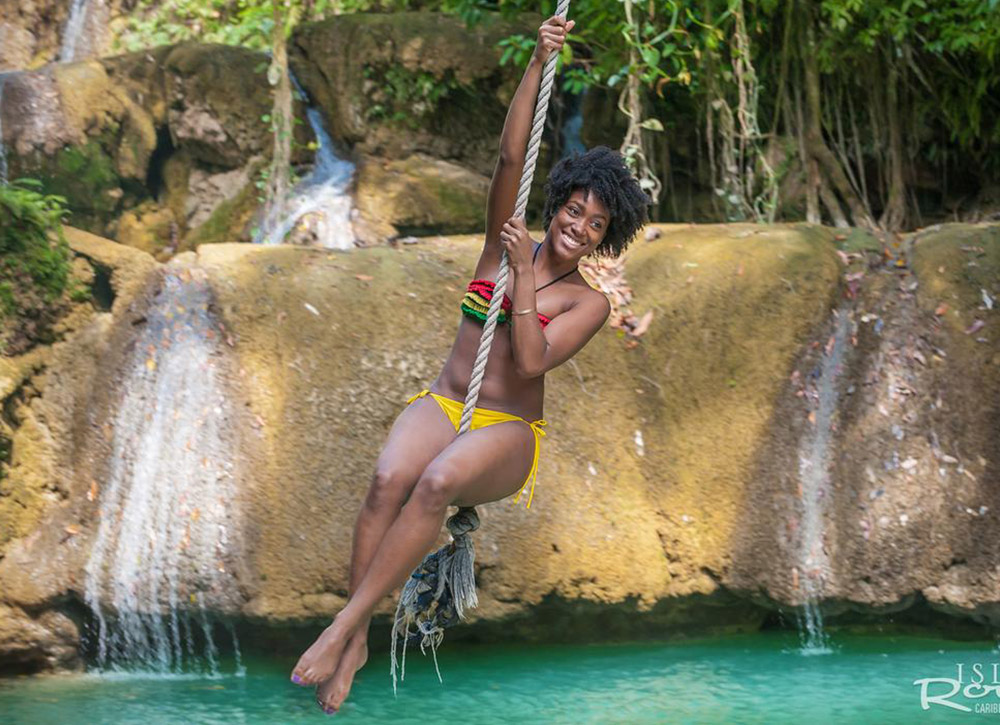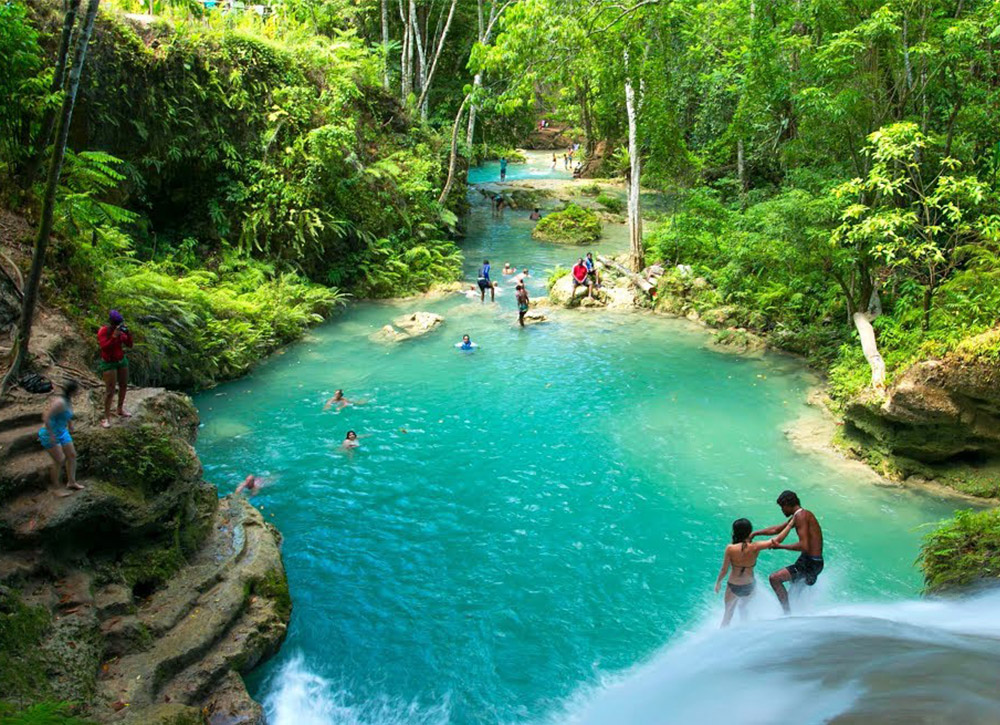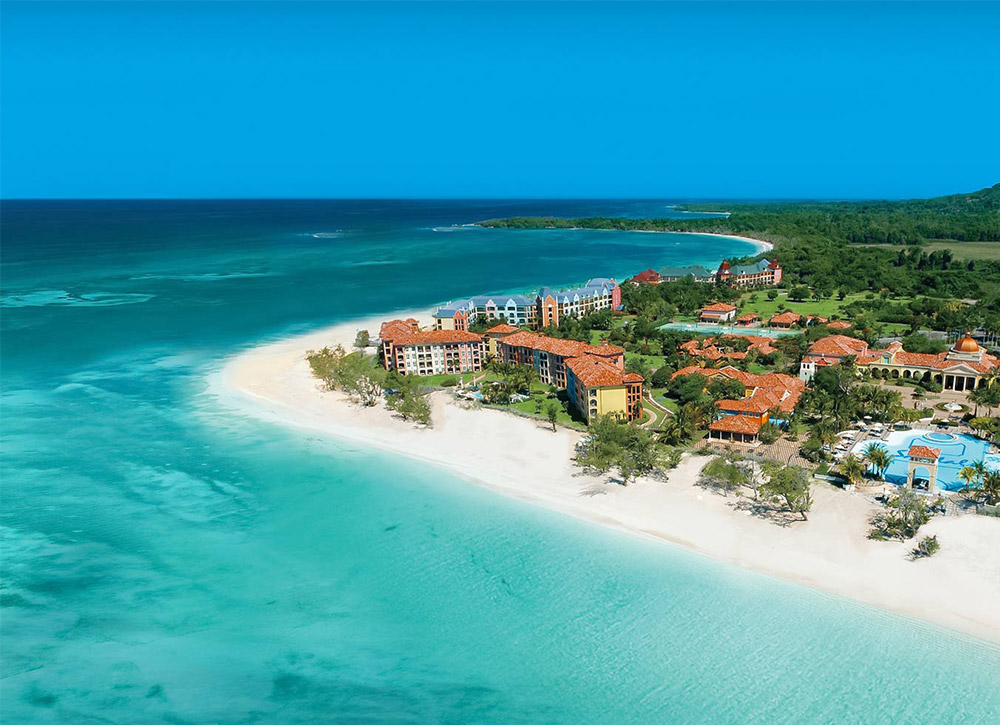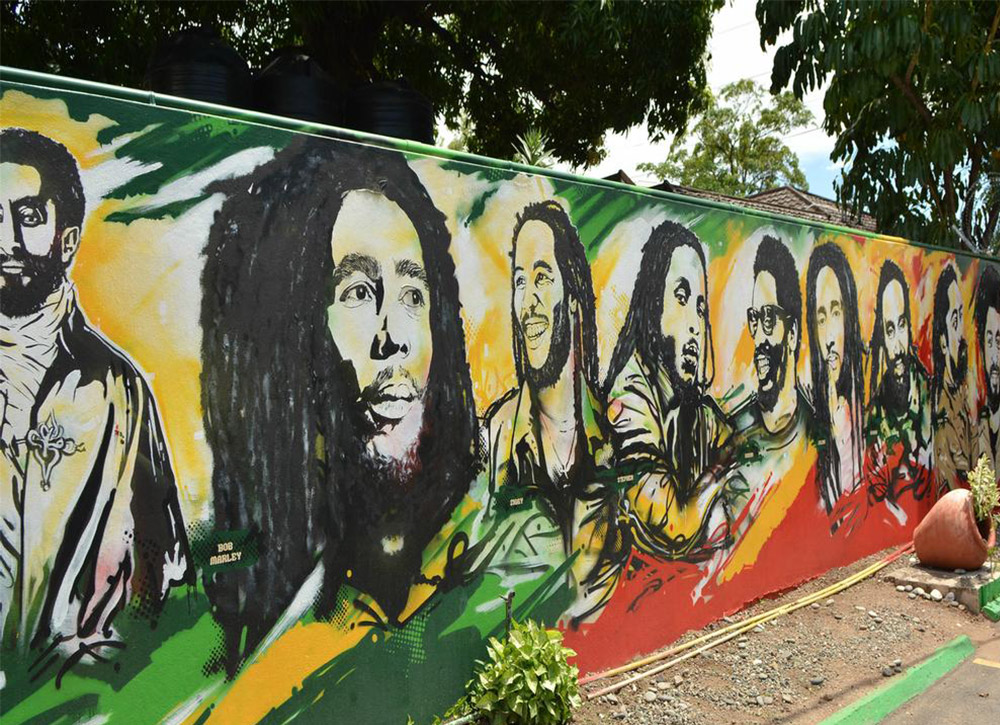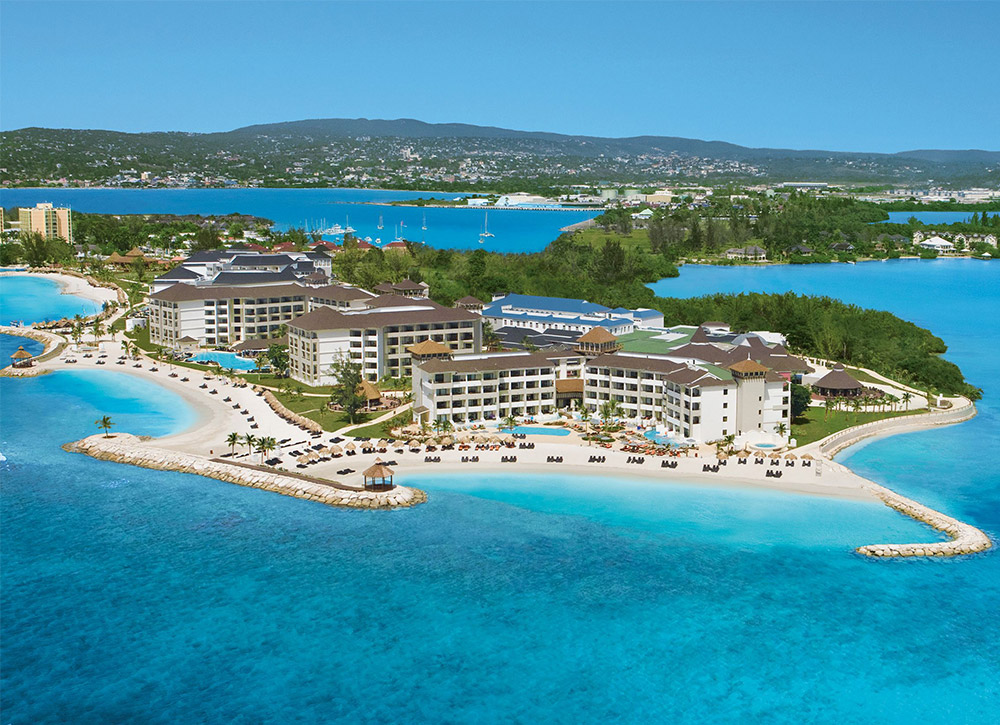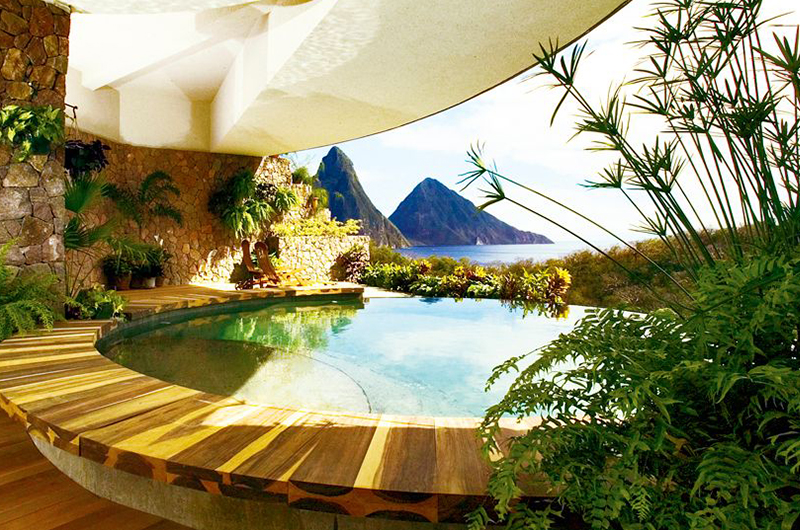Guide to Jamaica
Jamaica is the Caribbean country that comes with its own soundtrack. Groove to its singular rhythm as you explore beyond the beaches and all-inclusive. Even in a region as crammed with jewels as the Caribbean, Jamaica is a powerfully beautiful island. Jamaica begins with crystalline waters flowing over gardens of coral, lapping onto soft sandy beaches, then rises past red soil and lush banana groves into sheer mountains. Rushing waterfalls seem to erupt out of nowhere. Jamaican culture can be a daunting subject for foreigners to understand, but ultimately it’s a matter of appreciating this great green garden of a land and how its cyclical rhythms set the pace of so much island life. While Jamaica's beaches are certainly alluring, this is a country to dive into, literally and figuratively. Beneath the waves there's great scuba diving and snorkeling, and you can float on the water too with lazy bamboo-raft trips (let someone else pole). The adventurous can go caving, or get their hiking boots on to explore the remote crags and forests of this crumpled landscape. You don't even need to be as fit as Usain Bolt to enjoy the hike through lush mountains to the top of Blue Mountain Peak. With Bob Marley, Jamaica gifted us the first global superstar from the developing world. But he didn’t spring from nowhere – this tiny island has musical roots that reach back to the folk songs of West Africa and forward to the electronic beats of contemporary dancehall.
Simply put, Jamaica is a musical powerhouse, a fact reflected not just in the bass of the omnipresent sound systems, but in the lyricism of the patois language and the gospel sounds from the island’s many churches. Music is life in Jamaica, and you’ll soon find yourself swaying along with it. Like many aspects of Jamaican culture, the food is a creole, born somewhere between the Old and New Worlds. African spice rubs have evolved into delicious jerk, while yam, rice and plantain form the basis of rich stews, and fish abound in local waters. Throw in the astounding array of tropical fruits that seem to drip from the trees, washed down with a shot of rum, and you can see (and taste) how the Jamaican cultural story retains its original voice while adapting to the setting – and of course, rhythms – of the Caribbean.
Climate and Geography
Jamaica is the third largest island in the Caribbean.[43] It lies between latitudes 17° and 19°N, and longitudes 76° and 79°W. Mountains, including the Blue Mountains, dominate the inland. They are surrounded by a narrow coastal plain. Jamaica only has two cities, the first being Kingston, the capital city and center of business, located on the south coast and the 'second' city being Montego Bay, one of the best known cities in the Caribbean for tourism, located on the north coast. Other towns include Portmore, Spanish Town, Mandeville and the resort towns of Ocho Ríos, Port Antonio and Negril.[45] Kingston Harbour is the seventh-largest natural harbour in the world, which contributed to the city being designated as the capital in 1872. Tourist attractions include Dunn's River Falls in St. Ann, YS Falls in St. Elizabeth, the Blue Lagoon in Portland, believed to be the crater of an extinct volcano. Port Royal was the site of a major earthquake in 1692 that helped form the island's Palisadoes. The climate in Jamaica is tropical, with hot and humid weather, although higher inland regions are more temperate. Some regions on the south coast, such as the Liguanea Plain and the Pedro Plains, are relatively dry rain-shadow areas.
Jamaica lies in the hurricane belt of the Atlantic Ocean and because of this, the island sometimes suffers significant storm damage. Hurricanes Charlie and Gilbert hit Jamaica directly in 1951 and 1988, respectively, causing major damage and many deaths. In the 2000s (decade), hurricanes Ivan, Dean, and Gustav also brought severe weather to the island. Among the variety of terrestrial, aquatic and marine ecosystems are dry and wet limestone forests, rainforest, riparian woodland, wetlands, caves, rivers, seagrass beds and coral reefs. The authorities have recognized the tremendous significance and potential of the environment and have designated some of the more 'fertile' areas as 'protected'. Among the island's protected areas are the Cockpit Country, Hellshire Hills, and Litchfield forest reserves. In 1992, Jamaica's first marine park, covering nearly 15 square kilometres (5.8 sq. mi), was established in Montego Bay. Portland Bight Protected Area was designated in 1999. The following year Blue and John Crow Mountains National Park was created on roughly 300 square miles (780 km2) of wilderness, which supports thousands of tree and fern species and rare animals.
The tropical climate is influenced by the sea and the northeast trade winds, which are dominant throughout the year. Coastal breezes blow onshore by day and offshore at night. During the winter months, from December to March, colder winds known locally as “northers” reach the island from the North American mainland. The mountains cause variations in temperature according to elevation, but there is little change from season to season. Temperatures on the coasts can reach the low 90s F (about 32 °C), and minimum temperatures in the low 40s F (about 4 °C) have been recorded on the high peaks. Average diurnal temperatures at Kingston, at sea level, range between the high 80s F (about 31 °C) and the low 70s F (about 22 °C). At Stony Hill, 1,400 feet (427 meters) above sea level, the maximum and minimum means are only a few degrees cooler.
things to do in jamaica
Whether you picture yourself dozing on the beach or hiking up a mountain, exploring underwater worlds or playing a round of golf, you won't be bored in Jamaica. The island can be especially terrific for active travelers. If you're staying in Ocho Rios, you should climb through Dunn's River Falls & Park. If you're in Montego Bay, you have to try out the best golf greens – particularly the Tryall Club or White Witch Golf Course. Negril is all about the sand – a Seven Mile stretch of it, to be specific. If you're staying in Ocho Rios or just visiting for the day from a cruise ship, travelers insist you allot a couple of hours to climb the Dunn's River Falls. You can take a guided climb of the waterfall, hike a trail alongside it or just recline and relax on the beach at the bottom. Vacationers say that climbing along the rocks to the top of the falls isn't rigorous, but it can be slippery. Recent visitors said you can keep your footing by wearing water shoes. Given that you'll be splashed, then soaked by the cascading water on the ascent – and some say it's a bit dangerous – it's best if you leave your young kids (or any vacation buddies who aren't strong swimmers) at the foot of the falls. The attractions recommends allotting 45 minutes to an hour to climb the falls. Dunn's River Falls & Park, which sits less than 10 minutes from port in Ocho Rios, is open every day from 8:30 a.m. until 4 p.m. On days when cruise ships are in port, the park opens at 7 a.m. To enjoy the beach, explore the area and climb the falls adults will have to pay $23; admission for children (ages 4 to 12) costs $15. Tickets are sold at the front entrance and include the option of a guide to lead you up the falls (though guides do expect tips). Dunn's River Falls & Park's website provides further details.
Check your calendar before taking your tots to the cumin-colored sands of this western beach in Negril. Like its name suggests, Seven Mile has plenty of space for you to find a spot, but you'll share the area with a few adults-only resorts, as well as those who like to sunbathe in the nude. When the sun goes down, the sandy spread becomes a popular party spot. Recent travelers said Seven Mile features the clearest water they've ever seen, with others calling it perfect. Still similar to a lot of Jamaican beaches, Seven Mile sometimes has vendors who can often be persistent in hopes of selling everything from crafts to beer to fresh lobster. A simple "no, thank you" will often suffice, but don't be surprised if a vendor is unrelenting. You'll also find water sports operators offering rentals like kayaks or sailboats. For those in search of relaxation, soaking up the sun is another popular way to spend the day at the expansive Seven Mile Beach.
Seen the Brooke Shields movie of the same name? This is your chance to live it (though with your swimsuit on, please). Travelers recommend this central Port Antonio lagoon for its breathtaking water and surrounding gardens. Like its name suggests, the Blue Lagoon is a vibrant cobalt color that's worth snapping a few pictures and swimming a few laps around. The water is cool, very deep (approximately 200 feet, according to some reports) and a mix of saltwater and freshwater fed by a nearby mineral spring. Throughout the day as the angle of the sun changes, the water appears to be different shades of blue. You'll find the lagoon about 6 miles east of Port Antonio. The best way to experience the Blue Lagoon is on a boat or rafting tour, according to recent visitors. If you're not part of an organized tour, it's wise to visit the lagoon with a group; because of the lagoon's depth and seclusion, it can quickly become dangerous if you happen to get into trouble swimming. Boat or raft tours of the lagoon usually include a stop at the nearby Monkey Island. Most tours leave from Port Antonio, but full-day tours depart from Montego Bay and Ochos Rios. Some boat tours depart from San Beach, located about 1 mile east of the Blue Lagoon. Ask your hotel concierge for more information about setting up a tour. (According to past visitors, you can also sign up for a tour upon arrival as local guides are stationed at the attraction for hire.) There is no entrance fee, but you can expect to pay about $30 for a boat tour.
Take some time out of your sunning and swimming to pay homage to a musical legend. Located in Kingston, this museum occupies the former home of Bob Marley. Inside, you'll see personal artifacts, Marley's personal recording studio and his bedroom, among other highlights. Be sure to snap a few photos by the surrounding fence, decked out in Rastafarian "ice, gold and green" (or red, yellow and green). Keep in mind that this site can get very busy, which made the experience disappointing for some. Still, others said their tour guides made Marley and his music come alive. You can visit the Bob Marley Museum every day from 9:30 a.m. to 4 p.m. (75-minute tours are offered every half-hour). Admission to the museum (which includes a tour) costs $25 for adults and $12 for children ages 4 to 12. Additional tours are available, including tours of Marley's recording studio, Tuff Gong; prices vary. On-site facilities at the museum include a cafe and a gift shop.


